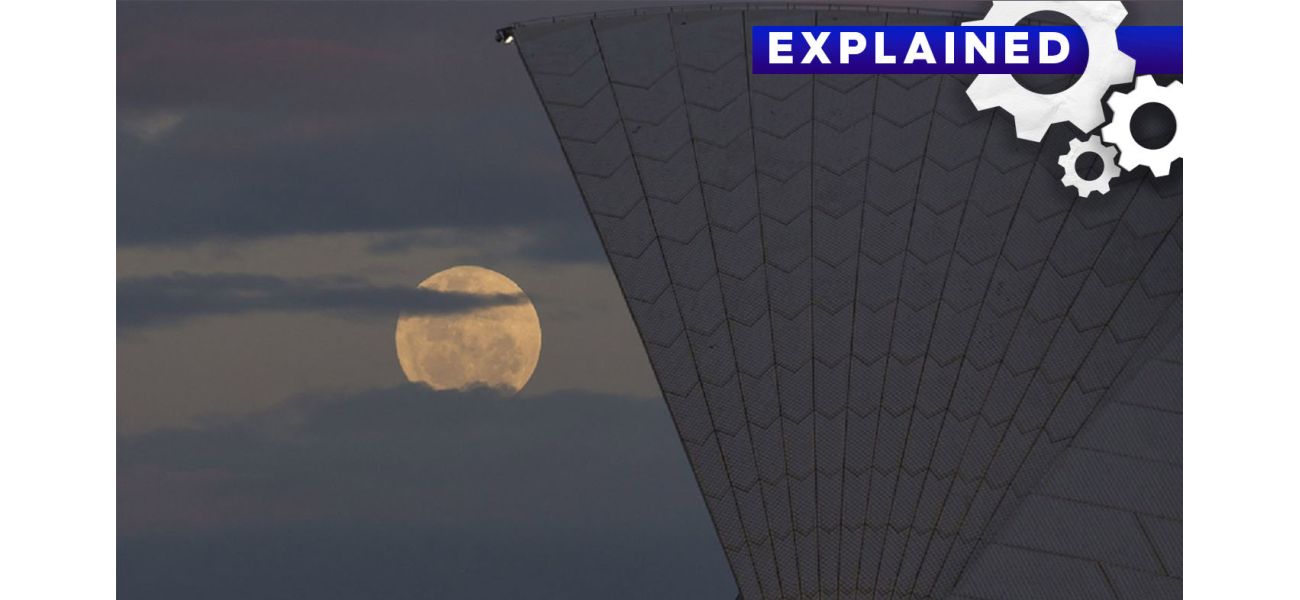Catch the supermoon in Australia tonight with these tips.
Some people on Earth will have the chance to witness a unique celestial event in the coming days.
September 18th 2024.

Tonight, some lucky skywatchers around the world will have the chance to witness a truly special event. As the night falls, a supermoon and a partial lunar eclipse will coincide, resulting in a magnificent but dim full moon in the sky. This rare occurrence is sure to capture the attention and awe of those who are lucky enough to see it.
For those outside of the few hours of the eclipse, the moon will appear even brighter and closer in the sky. It's a sight that many will not want to miss. So, if you're wondering how you can catch a glimpse of this unique event, here's everything you need to know.
Unfortunately for our friends in Australia, the partial lunar eclipse will not be visible from there. The eclipse will take place during the middle of the day when the moon is not visible in the sky. Dr. Rebecca Davies from Swinburne University explains, "the eclipse will begin at 10.41am on Wednesday September 18, peak at 12.44pm, and end at 2.47pm." However, there will be online livestreams available for those who are eager to witness this exciting event.
But fear not, Australia, as you can still witness the supermoon tonight. The moon will reach its fullest point at 12.34pm today, making it appear large and bright in the sky once it rises in the evening. Keep an eye out around 6pm when the moon is expected to rise. As long as the skies are clear, this will be the perfect time to catch a glimpse of the supermoon.
Now, you may be wondering, what exactly is a supermoon? Well, it's a term given to a full moon that is within 90% of its closest proximity to Earth. This close proximity makes the supermoon appear much bigger and brighter than a regular full moon. This week's supermoon is the second of four consecutive supermoons and, according to NASA, will be the closest one this year. The next supermoon, which will also be among the closest this year, will be visible next month.
In addition to being a supermoon, tonight's full moon is also known as the Harvest Moon. It's the full moon closest to the spring equinox and is also referred to as the Corn Moon, Fruit Moon, and Barley Moon. It's a perfect opportunity to appreciate the beauty of nature and the changing seasons.
Now, let's talk about the partial lunar eclipse that will occur tonight. According to Dr. Davies, "lunar eclipses occur when the Earth blocks light from the sun and casts a shadow on the full moon." In this case, the September 18 eclipse will be a partial one, covering the top 8.4% of the moon at its peak.
If you miss tonight's partial lunar eclipse, don't worry, there will be another one visible from Australia on March 14 next year. So mark your calendars and don't miss the chance to witness this spectacular event. In the meantime, enjoy tonight's supermoon and partial lunar eclipse, and take a moment to appreciate the wonders of our universe.
For those outside of the few hours of the eclipse, the moon will appear even brighter and closer in the sky. It's a sight that many will not want to miss. So, if you're wondering how you can catch a glimpse of this unique event, here's everything you need to know.
Unfortunately for our friends in Australia, the partial lunar eclipse will not be visible from there. The eclipse will take place during the middle of the day when the moon is not visible in the sky. Dr. Rebecca Davies from Swinburne University explains, "the eclipse will begin at 10.41am on Wednesday September 18, peak at 12.44pm, and end at 2.47pm." However, there will be online livestreams available for those who are eager to witness this exciting event.
But fear not, Australia, as you can still witness the supermoon tonight. The moon will reach its fullest point at 12.34pm today, making it appear large and bright in the sky once it rises in the evening. Keep an eye out around 6pm when the moon is expected to rise. As long as the skies are clear, this will be the perfect time to catch a glimpse of the supermoon.
Now, you may be wondering, what exactly is a supermoon? Well, it's a term given to a full moon that is within 90% of its closest proximity to Earth. This close proximity makes the supermoon appear much bigger and brighter than a regular full moon. This week's supermoon is the second of four consecutive supermoons and, according to NASA, will be the closest one this year. The next supermoon, which will also be among the closest this year, will be visible next month.
In addition to being a supermoon, tonight's full moon is also known as the Harvest Moon. It's the full moon closest to the spring equinox and is also referred to as the Corn Moon, Fruit Moon, and Barley Moon. It's a perfect opportunity to appreciate the beauty of nature and the changing seasons.
Now, let's talk about the partial lunar eclipse that will occur tonight. According to Dr. Davies, "lunar eclipses occur when the Earth blocks light from the sun and casts a shadow on the full moon." In this case, the September 18 eclipse will be a partial one, covering the top 8.4% of the moon at its peak.
If you miss tonight's partial lunar eclipse, don't worry, there will be another one visible from Australia on March 14 next year. So mark your calendars and don't miss the chance to witness this spectacular event. In the meantime, enjoy tonight's supermoon and partial lunar eclipse, and take a moment to appreciate the wonders of our universe.
[This article has been trending online recently and has been generated with AI. Your feed is customized.]
[Generative AI is experimental.]
0
0
Submit Comment





